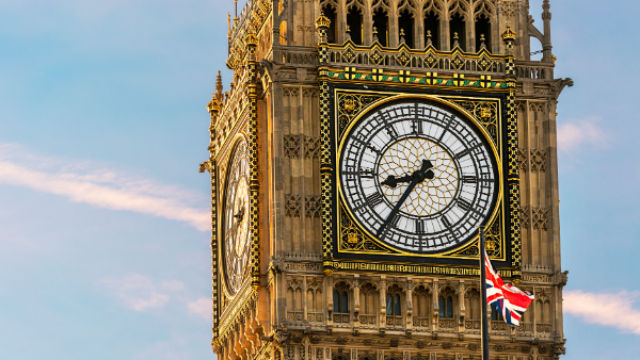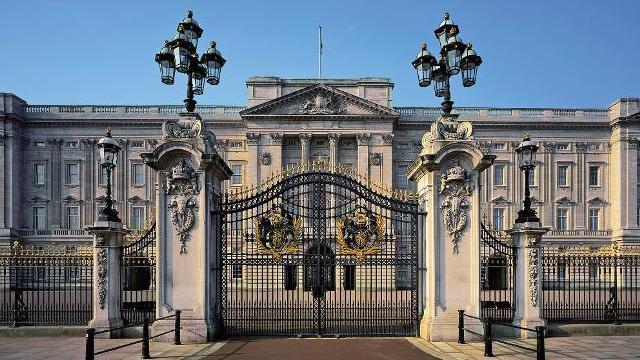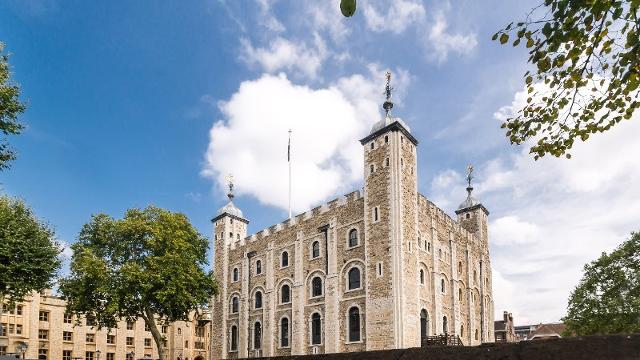United Kingdom
The United Kingdom of Great Britain and Northern Ireland, commonly known as the United Kingdom (UK) or Britain, is a sovereign country in western Europe. Lying off the north-western coast of the European mainland, the United Kingdom includes the island of Great Britain, the north-eastern part of the island of Ireland and many smaller islands. Northern Ireland is the only part of the United Kingdom that shares a land border with another sovereign state—the Republic of Ireland. Apart from this land border, the United Kingdom is surrounded by the Atlantic Ocean, with the North Sea to its east, the English Channel to its south and the Celtic Sea to its south-south-west, giving it the 12th-longest coastline in the world. The Irish Sea lies between Great Britain and Ireland. With an area of 242,500 square kilometres , the United Kingdom is the 78th-largest sovereign state in the world and the 11th-largest in Europe. It is also the 21st-most populous country, with an estimated 65.1 million inhabitants. Together, this makes it the fourth-most densely populated country in the European Union (EU).
London

London is the capital and most populous city of England and the United Kingdom.Standing on the River Thames in the south east of the island of Great Britain, London has been a major settlement for two millennia. It was founded by the Romans, who named it Londinium.
London is a leading global city in the arts, commerce, education, entertainment, fashion, finance, healthcare, media, professional services, research and development, tourism, and transportation. It is crowned as the world’s largest financial centre and has the fifth- or sixth-largest metropolitan area GDP in the world. London is a world cultural capital. It is the world’s most-visited city as measured by international arrivals and has the world’s largest city airport system measured by passenger traffic. London is the world’s leading investment destination, hosting more international retailers and ultra high-net-worth individuals than any other city. London’s universities form the largest concentration of higher education institutes in Europe. In 2012, London became the first city to have hosted the modern Summer Olympic Gamesthree times.
London has a diverse range of people and cultures, and more than 300 languages are spoken in the region. Its estimated mid-2016 municipal population (corresponding to Greater London) was 8,787,892, the largest of any city in the European Union,and accounting for 13.4% of the UK population. London’s urban area is the second most populous in the EU, after Paris, with 9,787,426 inhabitants at the 2011 census. The city’s metropolitan area is the most populous in the EU with 13,879,757 inhabitants, while the Greater London Authority states the population of the city-region (covering a large part of the south east) as 22.7 million. London was the world’s most populous city from around 1831 to 1925.
London contains four World Heritage Sites: the Tower of London; Kew Gardens; the site comprising the Palace of Westminster, Westminster Abbey, and St Margaret’s Church; and the historic settlement of Greenwich. Other famous landmarks include Buckingham Palace, the London Eye, Piccadilly Circus, St Paul’s Cathedral, Tower Bridge, Trafalgar Square, and The Shard. London is home to numerous museums, galleries, libraries, sporting events, and other cultural institutions, including the British Museum, National Gallery, Natural History Museum, Tate Modern, British Library, and West End theatres. The London Underground is the oldest underground railway network in the world.
London Attraction
London has amazing attractions to visit and see! The most popular sights in London are:
Big Ben

The Houses of Parliament and Elizabeth Tower, commonly called Big Ben, are among London’s most iconic landmarks and must-see London attractions. Technically, Big Ben is the name given to the massive bell inside the clock tower, which weighs more than 13 tons (13,760 kg). The clock tower looks spectacular at night when the four clock faces are illuminated.
Big Ben Facts
- Each dial is seven metres in diameter
- The minute hands are 4.2 metres long (14ft) and weigh about 100kg (220lbs, including counterweights)
- The numbers are approximately 60cm (23in) long
- There are 312 pieces of glass in each clock dial
- A special light above the clock faces is illuminated when parliament is in session
- Big Ben’s timekeeping is strictly regulated by a stack of coins placed on the huge pendulum.
- Big Ben has rarely stopped. Even after a bomb destroyed the Commons chamber during the Second World War, the clock tower survived and Big Ben continued to strike the hours.
- The chimes of Big Ben were first broadcast by the BBC on 31 December 1923, a tradition that continues to this day.
- The latin words under the clockface read DOMINE SALVAM FAC REGINAM NOSTRAM VICTORIAM PRIMAM, which means “O Lord, keep safe our Queen Victoria the First”
- In June 2012 the House of Commons announced that the clock tower was to be renamed the Elizabeth Tower in honour of Queen Elizabeth II’s Diamond Jubilee.
The Palace of Westminster was destroyed by fire in 1834. In 1844, it was decided the new buildings for the Houses of Parliament should include a tower and a clock.
Elizabeth Tower stands at over 96 metres (105yrds) tall, with 334 steps to climb up to the belfry and 399 steps to the Ayrton Light at the very top of the tower.
Coca- Cola London Eye

The Coca-Cola London Eye is centrally located in the heart of the capital, gracefully rotating over the River Thames opposite the Houses of Parliament and Big Ben.
At 135 metres, the Coca-Cola London Eye is the world’s tallest cantilevered observation wheel; a feat of design and engineering, it has become the modern symbol representing the capital and a global icon. The experience showcases breathtaking 360-degree views of the capital and its famous landmarks and has been the number one visitor experience in the city for the past decade.
The gradual rotation in one of the 32 high-tech glass capsules takes approximately 30 minutes and gives you an ever-changing perspective of London. Within each capsule, interactive guides allow you to explore the capital’s iconic landmarks in several languages.
Buckingham Palace

Buckingham Palace is the London residence and administrative headquarters of the reigning monarch of the United Kingdom. Located in the City of Westminster, the palace is often at the centre of state occasions and royal hospitality. It has been a focal point for the British people at times of national rejoicing and mourning.
Originally known as Buckingham House, the building at the core of today’s palace was a large townhouse built for the Duke of Buckingham in 1703 on a site that had been in private ownership for at least 150 years. It was acquired by King George III in 1761 as a private residence for Queen Charlotte and became known as The Queen’s House. During the 19th century it was enlarged, principally by architects John Nash and Edward Blore, who constructed three wings around a central courtyard. Buckingham Palace became the London residence of the British monarch on the accession of Queen Victoria in 1837.
Tower of London

The Tower of London, officially Her Majesty’s Royal Palace and Fortress of the Tower of London, is a historic castle located on the north bank of the River Thames in central London. It lies within the London Borough of Tower Hamlets, separated from the eastern edge of the square mile of the City of London by the open space known as Tower Hill. It was founded towards the end of 1066 as part of the Norman Conquest of England. The White Tower, which gives the entire castle its name, was built by William the Conqueror in 1078 and was a resented symbol of oppression, inflicted upon London by the new ruling elite. The castle was used as a prison from 1100 (Ranulf Flambard) until 1952 (Kray twins), although that was not its primary purpose. A grand palace early in its history, it served as a royal residence. As a whole, the Tower is a complex of several buildings set within two concentric rings of defensive walls and a moat. There were several phases of expansion, mainly under Kings Richard the Lionheart, Henry III, and Edward I in the 12th and 13th centuries. The general layout established by the late 13th century remains despite later activity on the site.
Traditional British cooking recipe!
It is true that cooking recipes are part of native culture as they show many interesting characteristics for the inhabitants’ personalty! So we are going to present you the most famous and traditional cooking recipe of Britain. The presented reicipe is “Fish and Chips with Mushy Peas”…!
Fish and Chips with Mushy Peas

- Total:1 hr
- Active:20 min
- Yield:4 servings
- Level:Intermediate
- Ingredients
- One 10-ounce box frozen green peas
- 2 tablespoons cold unsalted butter
- Zest of 1 lemon
- Vegetable oil, for frying
- 2 pounds russet potatoes, peeled and cut into 1/3-inch-thick batons
- 2 cups all-purpose flour
- 1/2 cup rice flour
- 1 teaspoon baking soda
- 3/4 cup lager-style beer
- 3/4 cup seltzer or sparkling water
- 1 teaspoon lemon juice
- One 1 1/2-pound fillet hake, cut into 1 1/2-inch pieces (about 2 1/2 to 3 ounces each)
- Kosher salt and freshly ground pepper
- Malt vinegar, for serving
Directions
Bring 6 cups of generously salted water to a boil in a medium saucepan. Add the frozen peas and cook for 4 minutes. Reserve 3 tablespoons of the hot cooking water, and then drain the peas and return them to the pan. Immediately add the butter, lemon zest and cooking water and season with salt and pepper. Roughly mash the peas with a potato masher or in a food processor, and then cover and set aside.
Heat 2 inches of oil to 300 degrees F in a Dutch oven or heavy-bottomed wide pot. Meanwhile, rinse the potatoes with cold water to remove some of the surface starch and then dry well. Blanch the potatoes, in 2 to 3 batches to avoid overcrowding the pot, until just cooked through but still blond, about 2 minutes. Transfer to a paper-towel-lined baking sheet.
Raise the temperature of the oil to 345 degrees F. Preheat the oven to 200 degrees F. Whisk together 1 1/2 cups of the all-purpose flour, the rice flour, baking soda and 1 teaspoon salt. Pour in the beer, sparkling water and lemon juice and mix just until combined (do not over-mix). Keep the batter refrigerated until ready to use.
When the oil is ready, fry the potatoes in 2 to 3 batches until they are crisp and golden brown, about 3 minutes. Drain on a paper towel-lined baking sheet and sprinkle with salt, and then transfer to the oven to keep warm.
Sprinkle the fish fillets with salt and pepper. Coat the fish in the remaining all-purpose flour and then dip into the batter to completely coat. Carefully swish the fish partway into the oil for a few seconds before completely releasing. Once the coating starts to set on the first fillet, you can add another battered fillet into the oil. Fry until the fish is puffed, golden brown and cooked through, 5 minutes for thin fillets or 7 minutes for thick fillets, and then transfer to a paper towel-lined plate. Cook the remaining fillets and sprinkle with salt.
To serve, reheat the mushy peas if necessary. Serve the fish with the chips, mushy peas and malt vinegar on the side.
Here’s the link with the recipe and the video of its preparation!!!
http://www.cookingchanneltv.com/recipes/fish-and-chips-with-mushy-peas-2128615
London has so many attractions to see and visit but they worth it!
LikeLike